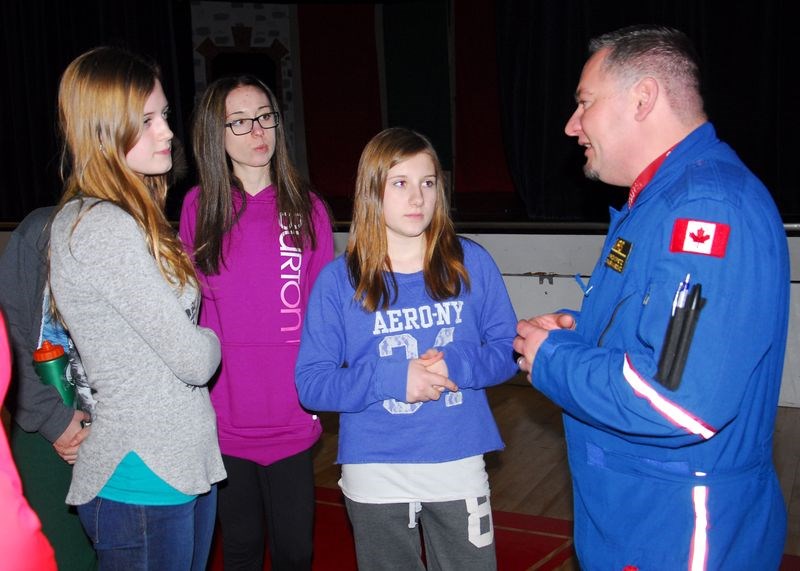All the students at Canora Composite School were invited to attend a presentation by Jason Prokopetz, a STARS paramedic, on January 13.
“Visiting the Canora school was one way to promote emergency medical services and the partnership with Shock Trauma Air Rescue Society (STARS),” he said. “STARS offers time, hope and life-saving transport to critically ill and injured patients. STARS delivers a critical care ICU team to your community.”
A STARS helicopter is not necessarily used to respond to all incidents, he said. Ground ambulance and airplane ambulance are other options which are taken into consideration when selecting the most appropriate emergency medical transportation. Flight times and the decision to transport by STARS helicopters are affected by a variety of factors including weather conditions, availability of resources, location of landing sites and the condition of the patient.
"As a local Kamsack boy, I feel it is important to promote paramedicine, the field of EMS and STARS," he said. Though he has been in EMS for more than 20 years, he has been working with STARS the last few years. Growing up in Kamsack, he has a number of relatives in Canora.
Prokopetz’s presentation included a number of STARS videos and he explained that STARS helicopters work as part of a team of first responders. After demonstrating the importance of having blood for a transfusion on board, it became the first helicopter service to carry blood on board at all times.
As an advanced care paramedic, he and a nurse look after the patient on board while two pilots look after flying the heliciopter, which is equipped with night-vision goggles. There are times when a seriously–ill patient is brought on board that a doctor will also accompany the patient.
STARS also uses an education bus which it takes to various communities to upgrade the training of emergency room nurses, he said. Such a bus was in Canora last year.
Working out of Regina General Hospital, his STARS helicopter must be airborne within eight minutes of a call, but it is usually in the air by the five-minute mark, Prokopetz said.
The helicopter travels at about 250 km/hr and has a range of 500 km, he said. With Canora being 205 km from Regina General, it is on the edge of how far the helicopter can fly without refuelling.
Prokopetz said STARS has been offered from Regina for four years thus far and he has personally been on 283 flights. The most serious calls are usually to traffic accidents and the statistics show that drinking-and-driving numbers are actually going up and not down, he said.
There are usually eight to 10 calls per shift, but it is the STARS physician that makes the call if the helicopter is actually deployed, Prokopetz said. On average, it does fly once or twice per shift and the territory covered is most of southern Saskatchewan.
The students enjoyed a long question-and-answer period with Prokopetz following the presentation.
STARS is a charitable, non-profit organization and the STARS Foundation is the fundraising arm of the organization. Funding is met through donations received from individuals, service groups, business, corporations, municipalities and through collaborative agreements with provincial governments.




